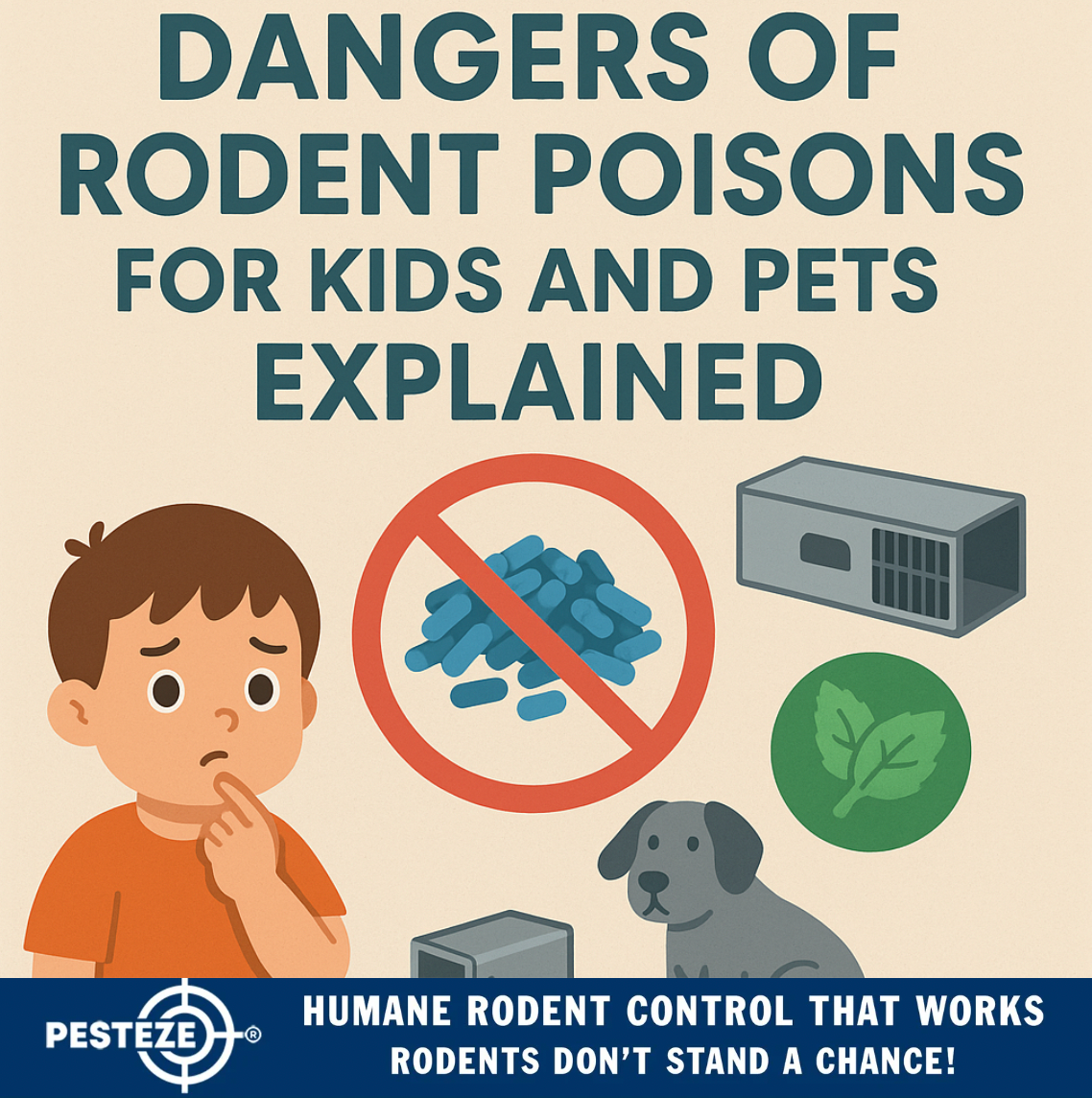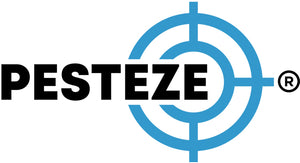DANGERS OF RODENT POISONS FOR KIDS AND PETS EXPLAINED

DANGERS OF RODENT POISONS FOR KIDS AND PETS EXPLAINED
SUMMARY
Rodent poisons may seem like a quick solution, but they pose serious risks to children and pets. This guide explains the hidden dangers of rodenticides and safer alternatives for protecting your home.
FEATURES
-
Accidental Ingestion: Kids and pets can mistake poisons for food.
-
Secondary Poisoning: Pets risk exposure by eating poisoned rodents.
-
Health Hazards: Internal bleeding, seizures, or organ failure.
-
Environmental Risks: Poisons harm wildlife and ecosystems.
-
Safer Alternatives: Humane traps, repellents, and exclusion methods.
-
Professional Solutions: Eco-friendly pest services for long-term control.
DESCRIPTION
While rodent poisons are commonly marketed as effective pest control, they present significant risks to children, pets, and the environment. Families seeking safe and responsible rodent control should be aware of these dangers and consider safer alternatives.
The most concerning issue is accidental ingestion. Rodenticides are often made with pellets, blocks, or powders that resemble food. Curious children or pets may eat them, leading to severe health emergencies. Ingesting even small amounts can cause nausea, seizures, or death without immediate medical treatment.
Secondary poisoning is another major risk. When pets like cats or dogs consume poisoned rodents, they ingest toxins indirectly. This can cause severe illness or death and often goes unnoticed until symptoms appear. Birds of prey and other wildlife face similar risks when scavenging poisoned rodents.
The health hazards associated with rodenticides are serious. Common ingredients like anticoagulants cause internal bleeding, while others can trigger organ failure, neurological damage, or respiratory distress. These poisons are not only harmful but also difficult to treat effectively once ingested.
Beyond homes, rodenticides pose environmental dangers. Poisoned rodents may die outdoors, where scavengers and predators consume them, spreading toxins through ecosystems. This chain reaction harms wildlife populations and disrupts local balance.
Fortunately, safer alternatives exist. Humane traps, both live and enclosed snap traps, effectively remove rodents without toxic chemicals. Natural repellents like peppermint oil, vinegar, or ultrasonic devices add another layer of protection. Securing food in airtight containers, sealing cracks, and maintaining sanitation also help prevent infestations naturally.
For persistent problems, eco-friendly pest control services are the best option. Many professionals now use integrated pest management (IPM) strategies that prioritize prevention, humane trapping, and eco-conscious deterrents instead of toxic chemicals.
By understanding the dangers of rodent poisons, families can make informed decisions that protect children, pets, and the environment while still keeping their homes rodent-free. Safer methods may take slightly more effort, but they offer peace of mind without the risks of toxic exposure.
- Saharsh Bansal


Comments 0